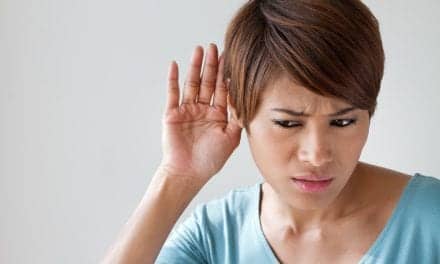Hearing Health Foundation (HHF) announced that it is launching a public health ad campaign on June 22 that will greet transit commuters in New York, San Francisco, and Chicago to drive the message—especially to young people—that playing music too loud on personal listening devices can permanently damage their hearing.
According to HHF, the “Keep Listening” campaign “responds to the global hearing loss emergency and promotes healthy hearing habits for life.” The outdoor ads and accompanying 30-second “Grenades” video were created by the Chicago creative agency The Escape Pod.
The campaign “sends the positive message that young people have the power to prevent noise-induced hearing loss (NIHL) by changing their listening behaviors through simple precautions such as turning down the volume on personal listening devices and wearing earplugs in loud places, like sports stadiums and fitness classes,” according to HHF.

Unaddressed hearing loss affects the brain, heart, and mental health, potentially leading to social isolation, depression, falls, and even dementia. Even mild-to-moderate untreated hearing loss can cause cognitive decline. It also impacts school and job performance: untreated hearing loss is associated with lower income potential and higher unemployment.
At first glance, the “Grenades” video looks like a new tech product launch, but carries the message that listening to music on headphones at loud decibels can cause hearing damage in a matter of minutes. The goal is to wake people up to the fact that hearing loss from noise is irreversible—but preventable. Even a small reduction in volume can offer significant protection, according to the World Health Organization (WHO).
Just as people changed their behavior as they became aware of the cancer risk from secondhand smoke and sun exposure, HHF wants to mobilize a culture shift on hearing loss so that everyone will protect their hearing.
“Noise-induced hearing loss is the biggest public health emergency that most people don’t know about, even though hearing loss is more common than diabetes or cancer,” says Timothy Higdon, HHF’s president and CEO. “Too few young people—and their parents—recognize that hearing loss can occur at any age due to noise exposure.”
The WHO calls hearing loss a global emergency with 1.1 billion young people—or 50% of the world’s population ages 12 to 35—at risk for hearing loss due to prolonged and excessive noise exposure, especially from personal listening devices. In the United States, nearly one in five teenagers 12 to 19 years old already show signs of NIHL.
Derek Sherman, creative director at The Escape Pod, said: “When we learned about the extent of hearing loss impacting teenagers and young adults we were all shaken. As a father, I know firsthand that our children– and really all of us– are exposed to these high volumes constantly. We think the grenades and electric drills images visually ‘explain’ the damage that earbuds and headphones can do at high volume.”
Anil Lalwani, MD, HHF board member, and the Chief of the Division of Otology, Neurology, and Skull Base Surgery at Columbia University, says, “Our goal is to persuade every young person that their hearing is precious and is worth protecting and preserving. And, that they can protect their hearing without giving up activities they love.”
HHF recommends these simple precautions:
Turn down the volume on headphones or earbuds. Experts recommended 50-60% of available volume for one hour at a time. Many headphones max out at 100 decibels or more, which can permanently harm hearing in 15 minutes.
Take a listening break and remove headphones or earbuds at least every hour.
Use earplugs in loud places–stadium events, concerts, noisy bars, and subway platforms–and around leaf blowers, lawnmowers, and other loud machinery. Earplugs are effective and affordable.
Hearing loss is subtle and occurs gradually; most people may not be aware they are affected. It’s important to check your hearing. Online hearing tests are quick, easy, and can alert you to a problem.
Source: HHF
Images: HHF





